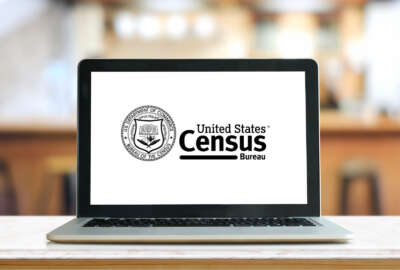

The Census Bureau has shifted its focus for 2020 to scaling up operations to count more than 300 million people living in the United States.
Just days after officially wrapping up the results of its 2018 field test, the Census Bureau has shifted its focus to scaling up operations to count more than 300 million people living in the United States next year.
Al Fontenot, associate director for decennial programs at the Census Bureau, said field test respondents in Providence County, Rhode Island successfully navigated the internet response site. In addition, call center staff managed to respond to over-the-phone requests for help and handled requests to fill out the questionnaire in a language other than English.
“The big takeaway from the 2018 census test is that all of our systems deployed and integrated effectively in our test. Real people were able to effectively use the technology in real-world conditions,” Fontenot said Monday at a press conference at the National Press Club.
Last Friday, the decennial team delivered the field test redistricting data file to all 50 states, the District of Columbia and Puerto Rico, marking an official end to the 2018 field test.
Starting mid-March next year, households across the country will receive invitations in the mail to respond to the 2020 census online. People living in areas with low internet connectivity or those deemed less likely to use the internet will receive a paper questionnaire in their first mailing from the bureau.
Census Bureau Director Steven Dillingham said the new response options “create new efficiencies, relieve burdens and reassure people that assistance is but a phone call away.”
But before that time comes, Fontenot said the agency will ensure that its systems will be able to handle a nationwide volume of web traffic.


Michael Thieme, the assistant director for decennial census programs, systems and contracts, speaking last Thursday at a Census Scientific Advisory Committee meeting, said he expects up to 120,000 concurrent users will respond to the census online at any time. However, the bureau has built its IT architecture to handle up to 600,000 concurrent users, even though it remains unclear if the site will ever encounter that volume of traffic.
The decennial team is also working with the Department of Homeland Security, as well as private sector tech companies, to build the “most state-of-the-art protections” against cyber intrusions.
Tech innovations also extend to census enumerators, who will carry iPhones loaded with a custom app that automates casework assignments and optimizes daily routes for them. These innovations, Fontenot said, have made field test enumerators more than 50 percent more productive compared to 2010.
“We couldn’t be more excited, the reason being that we are on mission, on schedule, on budget, on message and on course to complete the biggest and best census,” Dillingham said.
Last April, the bureau projected that the total cost of the 2020 census would be $15.6 billion — about a 27 percent increase from previous estimates.
While bureau officials expect some of these innovations will drive down the cost of future decennial counts, 2020 is well on track to be the most expensive decennial count.
In August, the bureau will begin in-field address canvassing operations. Tim Olson, the associate director for field operations, said the bureau has already received more than 230,000 applications to fill 50,000 field jobs. Later this fall, the bureau will seek an additional 2.3 million applicants to fill more than 500,000 temporary enumeration jobs.
However, through partnerships with state, local and tribal governments, the bureau has verified more than 106 million addresses.
The bureau will conduct a review of every address for the 2020 count, but it will also rely on its new Block Assessment Research and Classification Application (BARCA), which compares satellite imagery from 2009 and the present to track and review addresses.
The bureau aims to hire more than 1,500 partnerships specialists — more than double the volume it hired in 2010 — to enlist more than 300,000 organizations to serve as census partners.
“Many of you represent the trusted voices you are uniquely positioned to share, and reinforce a concise yet vital message: that the 2020 census is easy, secure and important,” Dillingham said.
Olson said the bureau has hired more than 700 partnership staff, and said the bureau expects to hire the remaining specialists by July. More than 9,000 organizations, he added, have already agreed to participate.
In addition, Olson said the bureau, together with the General Services Administration, have secured leases for each of the bureau’s 248 temporary census field offices across the country.
Under its first wave of operations, the bureau will open 39 field offices; 37 have already opened their doors, and the remaining two, Fontenot said, will open “within days.”
Copyright © 2024 Federal News Network. All rights reserved. This website is not intended for users located within the European Economic Area.
Jory Heckman is a reporter at Federal News Network covering U.S. Postal Service, IRS, big data and technology issues.
Follow @jheckmanWFED
